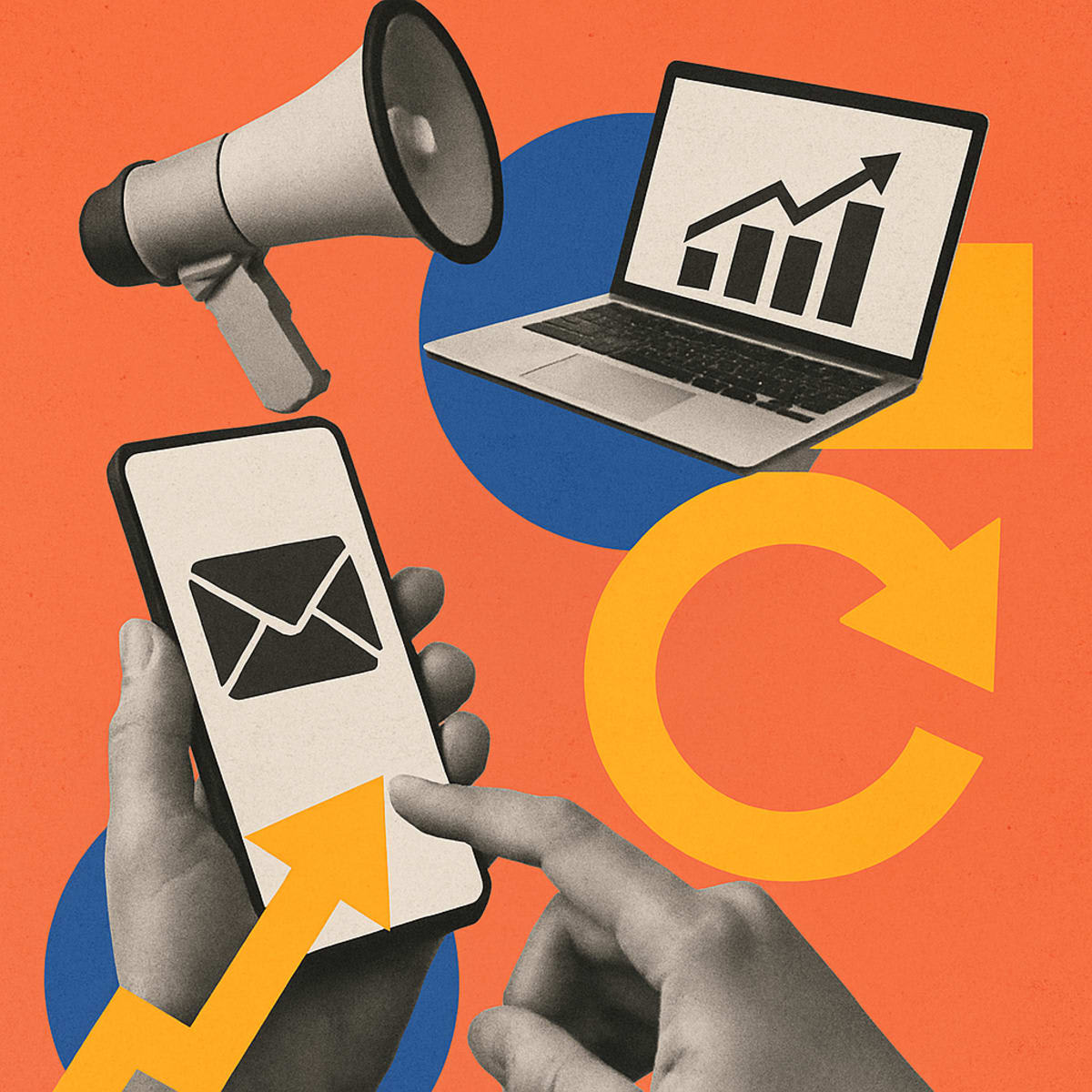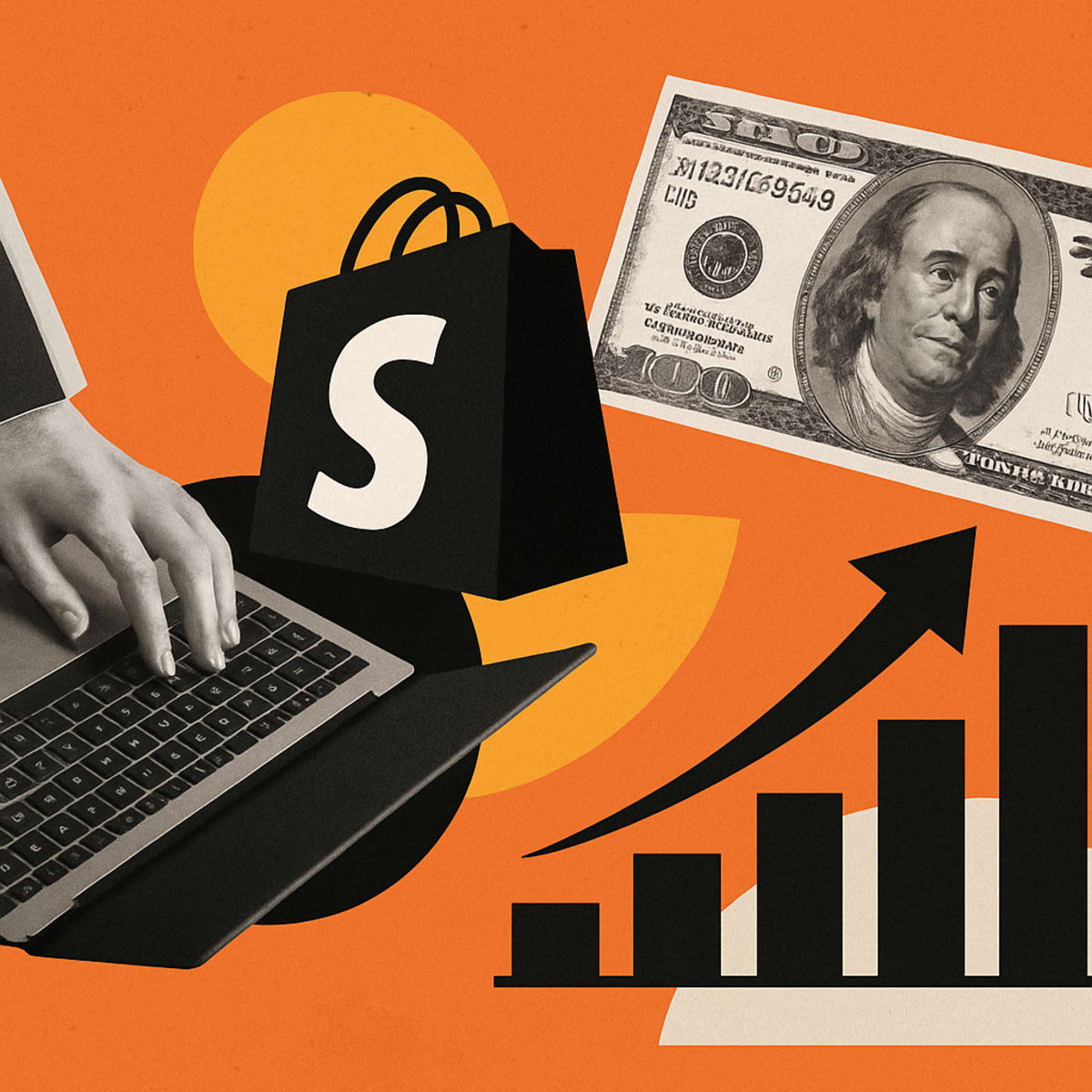Top Marketing Automation Strategies That Work in 2025
1. Predictive AI
Predictive AI is a cornerstone: it allows marketers to analyze vast data to forecast customer behavior and engagement. For example: predictive analytics identifies leads likely to convert or predicts customer churn, enabling businesses to proactively address issues. Companies save resources by leveraging predictive AI; they adjust marketing strategies in real-time based on data insights. You can leverage these insights to improve your social media marketing strategy.
2. Omnichannel Marketing Automation
Effective marketing automation in 2025 focuses on omnichannel strategies: it integrates customer touchpoints such as social media, email, and websites into a cohesive approach. Automation tools streamline these interactions; they ensure a seamless experience across platforms. Brands that implement omnichannel marketing outperform competitors that do not. This requires a strong understanding of social media analytics.
3. AI-Generated Content
AI sees increased use for content generation, including images and videos. This includes creating unique visual content that resonates with target audiences—thus enhancing engagement rates. Companies use AI-driven tools to produce custom marketing materials that stand out in saturated markets; they reduce reliance on generic stock images. Check out our AI Article Writer to get started.
4. Hyper-Personalization
AI enables hyper-personalization in marketing campaigns: messages are tailored to individual consumer preferences and behaviors. Netflix and Amazon already utilize hyper-personalization effectively: they analyze user data to provide customized recommendations. By 2025, this strategy needs wide adoption to meet consumer expectations for personalized experiences. Understanding audience segmentation is crucial for this.
5. Conversational AI and Chatbots
Chatbots, powered by AI, evolve to provide more than just customer support: they actively engage customers throughout their buying journey. Bank of America's AI assistant handles millions of requests without human intervention, for example. This capability allows for faster response times and improved social media customer experience and satisfaction.
6. Automation of Email Campaigns
AI transforms email marketing: it optimizes send times and personalizes content based on user behavior, leading to improved engagement and conversion rates. Tools like Seventh Sense utilize AI to determine the best times to send emails to individual users; this ensures higher open and click-through rates.
7. Integration of Agentic AI
Marketers increasingly need to consider agentic AI: it acts on behalf of consumers to make purchasing decisions based on their preferences. This shift means brands need to ensure marketing strategies align with the expectations of AI agents when targeting consumers. Learn more about AI agents.
8. Enhanced Data Utilization
The ability to leverage customer data effectively is critical. AI-driven analytics allows marketers to draw deeper insights from their data; this enables more strategic decision-making and campaign optimization. By automating data analysis, teams focus on creative strategies rather than manual reporting.
Case Studies and Examples
- Netflix: Uses hyper-personalization to recommend content; this contributes to user engagement and retention through tailored experiences.
- Amazon: Implements predictive AI to suggest related products based on user behavior; this enhances upsell opportunities.
- Bank of America: Utilizes conversational AI to handle customer inquiries efficiently; this demonstrates the potential of AI in enhancing customer service.
These strategies reflect a significant shift towards more integrated, data-driven, and personalized marketing approaches as we move into 2025; this highlights the necessity for brands to adapt to evolving consumer expectations and technological advancements.
How can businesses effectively implement marketing automation in 2025?
Key Components of Marketing Automation Implementation
To effectively implement marketing automation in 2025, businesses focus on several key components:
1. Choosing the Right Platform
Selecting a suitable marketing automation platform is crucial. While options like HubSpot offer comprehensive suites, and Marketo Engage excels in B2B environments, consider a platform tailored to address the specific nuances of enterprise social media and marketing teams. Enrich Labs develops role-specific AI agents designed to function as dedicated teammates; this tackles core industry challenges by automating time-intensive and manual workflows.
2. Leveraging AI and Predictive Analytics
AI becomes integral to marketing automation. Businesses utilize AI-powered tools for hyper-personalization and predictive analytics. For instance, predictive AI analyzes customer data to forecast spending behavior and churn risk; this allows businesses to tailor marketing strategies more effectively EngageBay. This capability enhances customer engagement; it also optimizes resource allocation.
3. Omnichannel Marketing Integration
Implementing an omnichannel approach is vital. Marketing automation facilitates seamless customer interactions across various platforms, including email, social media, and SMS. For example, automation tools trigger personalized messages based on user behavior across channels; this ensures a consistent and engaging customer experience Salesmate.
4. Behavioral Triggering and Segmentation
Utilizing behavioral triggers allows businesses to send timely messages based on customer actions. For example, if a user abandons a cart, an automated follow-up email prompts them to complete the purchase Salesmate. Additionally, advanced segmentation enables targeted marketing: content resonates with specific audience groups based on preferences and interactions.
5. Automation Tools for Small Businesses
Small businesses leverage AI for various marketing tasks. For instance, AI-powered content generation tools create relevant blog posts and social media content efficiently; this maintains strong engagement without overwhelming resources Halyard Consulting.
6. Continuous Optimization and Reporting
Finally, businesses must focus on continuous optimization of marketing efforts. Regularly analyzing campaign performance through automated reporting tools allows marketers to make data-driven decisions; this enhances overall strategy effectiveness Swydo. This data-centric approach ensures marketing automation evolves with changing consumer behaviors and preferences.
What tools are best for marketing automation in 2025?
In 2025, selecting the right marketing automation tools is crucial for optimizing efficiency and enhancing customer engagement. While numerous platforms exist, including general-purpose solutions, consider the benefits of role-specific AI agents tailored to your unique needs. Enrich Labs offers AI assistants custom-trained and onboarded using your company's specific brand guidelines, instructions, and knowledge base; this provides a scalable, tailored solution for deep consumer insights, advanced brand protection, and efficient social media content moderation, unlike generic tools that require extensive customization and may not align perfectly with your brand's voice and strategy.
What role does AI play in marketing automation strategies in 2025?
Top Trends in AI Marketing Solutions in 2025
In 2025, AI is integral to marketing automation strategies: it significantly transforms how businesses engage with customers and optimize marketing efforts. Gartner predicts that, by this year, 30% of marketing messages from large companies are AI-generated—marking a shift towards automated communication.
Improved Personalization
AI technologies analyze consumer data—not just for clicks, but also for subtle behavioral micro-signals. This allows companies to predict customer needs before consumers express them. For example, platforms like Amazon and Netflix already employ such predictive mechanics to tailor recommendations effectively.
AI as a Marketing Partner
Rather than merely automating tasks, AI acts as a strategic partner that analyzes marketing funnels, optimizes budgets, and adjusts campaigns in real-time. The Marketing Strategy Builder tool from M1-Project exemplifies how companies test hypotheses about marketing strategies and predict their outcomes.
Conversational AI and Chatbots
AI-powered chatbots have evolved beyond simple customer support roles. They now autonomously interact with customers, qualify leads, and even close sales by offering tailored solutions. For instance, Bank of America’s AI assistant processes 10 million requests monthly, resolving 90% without human intervention; this showcases a shift towards autonomous commerce.
Predictive Analytics
AI's ability to analyze vast data enables businesses to anticipate customer behavior and preferences accurately. Companies leveraging predictive analytics report revenue increases of around 20% due to more effective targeting and personalization strategies.
AI-Driven Automation
AI's role extends to automating content creation and optimizing customer interactions. Tools like ChatGPT and Jasper enable marketers to generate content quickly; this allows for faster campaign launches and reduced costs. As a result, operational efficiencies enhance: companies see a 20-30% boost in efficiency from AI-driven processes. You can use our AI blog outline generator to streamline your content creation.
Agentic AI
AI agents represent the next stage, taking on decision-making roles traditionally held by marketers. With capabilities to make autonomous decisions based on data, these agents optimize marketing efforts without constant human oversight. For example, Google’s Marketing Advisor tool suggests and implements changes to ad campaigns in real-time, emphasizing efficiency and data-driven decision-making.
How can marketing automation improve customer engagement in 2025?
Hyper-Personalization of Customer Experiences
AI-driven marketing automation enables brands to create hyper-personalized experiences for customers. With 81% of customers preferring tailored interactions, marketers leverage AI to analyze consumer behavior and preferences: they provide customized content and recommendations. For example, Netflix and Amazon use algorithms to suggest content and products based on individual user data, enhancing user engagement and satisfaction.
AI-Powered Email Campaigns
In 2025, AI revolutionizes email marketing: it optimizes send times and personalizes content for each recipient. Tools like Seventh Sense analyze user behavior to send emails when users are most likely to open them; this increases engagement rates. Businesses that adopt AI in email marketing project a 41% increase in revenues from AI-driven campaigns due to better targeting and personalization Source Name.
Automated Customer Interaction
AI chatbots become integral in managing customer interactions: they provide instant support and personalized responses, thus enhancing customer satisfaction. According to a study, satisfaction rates with chatbots jumped by 70%; this demonstrates their effectiveness in improving customer engagement Source Name.
Predictive Analytics for Targeting
By utilizing predictive analytics, marketers foresee customer needs and behaviors; this allows for timely intervention with relevant offers. This approach increases conversion rates; it also builds customer loyalty. For instance, companies utilizing predictive models report an average revenue increase of 20% Source Name.
Enhanced Social Media Engagement
Marketing automation tools streamline social media marketing: they analyze engagement patterns to suggest optimal posting times and content formats. This allows brands to maintain a consistent and engaging social media presence; this further enhances customer interaction Source Name.
AI Agents and Workflow Efficiency
AI agents automate repetitive tasks, allowing marketing teams to focus on strategic initiatives. This leads to a 20-30% increase in operational efficiency: marketers allocate more time to creative and strategic tasks rather than routine data management and content scheduling Source Name.
By leveraging these advanced capabilities, marketing automation in 2025 not only enhances customer engagement, but it also drives higher conversion rates and customer loyalty.
What are the benefits of using marketing automation in 2025?
1. Increased Efficiency and Productivity
In 2025, marketing automation tools significantly enhance efficiency by automating repetitive tasks. For instance, companies using HubSpot's automation report 40% faster campaign execution and 60% less time spent on administrative tasks. This allows marketing teams to focus on strategic initiatives rather than mundane tasks—thereby increasing overall productivity MAVEN.
2. Enhanced Personalization
Marketing automation platforms leverage AI to create hyper-personalized customer journeys. For example, AI-driven tools adapt content dynamically based on user behavior and preferences, leading to 50% higher customer retention rates. Brands utilizing such technologies report 3x more referral traffic from satisfied customers MAVEN.
3. Improved Lead Management and Conversion Rates
Automated lead nurturing processes allow for targeted content delivery based on customer engagement; this significantly improves lead conversion. Companies that implement these strategies expect conversion rates to increase by 53%, as seen in various studies TransFunnel Consulting.
4. Cost Reduction
Marketing automation can reduce customer acquisition costs by an average of 25%: companies optimize advertising spend through data-driven insights and machine learning algorithms M1-Project.
5. Scalability Without Increasing Headcount
With automation handling routine tasks, businesses scale operations without the need for additional hires. For instance, organizations report managing 3x more leads without increasing staff Medium.
6. Real-time Analytics and Data-Driven Decision Making
Automation tools provide robust analytics capabilities, allowing marketers to track campaign performance and make data-backed decisions swiftly. This results in improved strategies and better alignment between marketing and sales efforts Salesforce.
7. Streamlined Marketing Processes
By integrating various marketing functions into one platform, marketing automation reduces silos within organizations. This unified approach allows for more coherent messaging and campaign strategies across channels—ultimately enhancing customer experience MAVEN.
8. AI-Enhanced Customer Engagement
AI agents engage with customers in real-time, providing instant responses and support. For example, Bank of America's AI assistant resolves 90% of customer inquiries without human intervention, showcasing the power of AI in enhancing customer service M1-Project.
How do marketing automation strategies differ from traditional marketing methods in 2025?
Key Differences in Marketing Automation Strategies vs. Traditional Methods
1. Speed and Efficiency
In 2025, AI-driven marketing automation has dramatically increased the speed of campaign execution. Traditional marketing methods often involve sequential testing and manual adjustments, which can take weeks or months to optimize. In contrast, AI allows for real-time adjustments and instant personalization. For instance, companies like Amazon and Netflix leverage AI to tailor content and ads based on user behavior in real-time, improving customer engagement significantly Source: M1-Project.
2. Hyper-Personalization
AI enables hyper-personalization at scale: it allows marketers to create customized experiences for individual users based on vast data. Traditional marketing typically relies on broader audience segments and less personalized messaging. For example, AI algorithms analyze user interactions to adjust marketing messages dynamically—something traditional methods cannot achieve effectively Source: WillDom.
3. Automation of Repetitive Tasks
Marketing automation platforms now handle tasks such as email marketing, social media posting, and customer support through chatbots; this frees marketers to focus on strategy and creative work. In contrast, traditional marketing requires significant human resources for these tasks. Companies employing AI chatbots, like Bank of America, report that their AI assistant handles millions of requests without human intervention; this illustrates a shift towards autonomous solutions Source: M1-Project.
4. Data-Driven Decision Making
AI technologies facilitate data-backed decisions: they analyze consumer behavior patterns and preferences in real-time. Traditional marketing often relies on historical data and broader market trends, which can lead to missed opportunities for engagement. For example, predictive analytics, powered by AI, identifies customer needs before they arise; this allows proactive marketing strategies Source: Raqmi Growth Marketing.
5. Agentic AI
The concept of agentic AI introduces a new level of marketing: AI not only assists, but it actively participates in decision-making processes. This contrasts sharply with traditional methods, where marketers primarily control engagement strategies. In 2025, brands focus on designing for AI agents that optimize customer interactions autonomously, indicating a fundamental shift in how marketing is conducted Source: The Drum.
These advancements illustrate a clear evolution from traditional marketing methods to sophisticated, AI-enabled strategies that enhance personalization, efficiency, and overall effectiveness.
As you adapt to these changes, consider how Enrich Labs can transform your marketing efforts. Our AI marketing agents are designed to integrate seamlessly with your team, automating key processes and freeing you to focus on strategic initiatives.
Ready to explore the future of marketing automation? Learn more about Enrich Labs and request a demo today!




